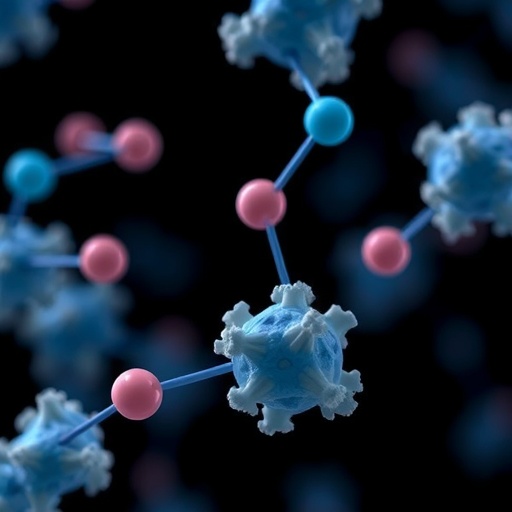Basic science discovery explains a fundamental way human cells differ from yeast cells
SAN FRANCISCO, CA–May 2, 2019– Scientists at the Gladstone Institutes have made a key observation about one of the most fundamental biological processes: gene transcription.
A gene’s job is to provide a cell with the instructions to create a specific protein. The first step of this process is called transcription, during which the DNA is copied into RNA. The scribe is an enzyme called RNA polymerase II, but the polymerase doesn’t work alone. Several proteins interact with the polymerase’s long tail to produce chemical modifications that regulate critical steps of the processing of cellular RNA.
For decades, scientists thought that one modification, phosphorylation, ran the show. Its function is so essential that it occurs during gene transcription in cells ranging from yeast to humans. In 2013, Melanie Ott, MD, PhD, a senior investigator at Gladstone, discovered that another modification, called acetylation, also occurs on the regulatory tail of the polymerase during gene transcription in more complex organisms like mammals. No one knew what acetylation was doing, though, until now.
“There’s so much evidence that phosphorylation plays an important role in transcription in many different species,” says Ott, who published a new paper on the topic in the scientific journal Molecular Cell. “We show that acetylation provides a unique avenue for higher order species to regulate thousands of genes. Before, we only knew of its existence; now, we know how it functions.”
Three Waves of Modifications
Ott’s team revealed that acetylation and phosphorylation tag-team to guide the RNA polymerase through the different steps of transcription.
To start transcribing a gene, the polymerase tail must be marked by phosphorylation at a specific spot. However, for the polymerase to continue and complete making the RNA copy, that mark needs to be removed. In the new paper, Ott and her colleagues show that a key role for acetylation is to recruit a family of proteins called RPRD to the polymerase, which contain an enzyme that can erase the phosphorylation.
“Our report is the first to indicate that acetylation enhances the binding of the RPRD proteins to the polymerase,” says Ibraheem Ali, PhD, a postdoctoral fellow in Ott’s lab who is first author on the new paper. “What we think happens is that the RPRD proteins bind to the acetylation mark, helping to remove the first phosphorylation so the polymerase can move on to the next phase of transcription.”
The team also found that another protein is recruited to the polymerase to remove the acetylation mark. This step might be necessary to enable a second phosphorylation to occur at a different site on the polymerase tail, which is needed to jump-start the next stage of transcription.
“We imagine it happening in three waves,” Ali explains. “The first wave is the first phosphorylation. The second wave is the acetylation, and the presence of the second wave forces the first wave to subside. And then, as acetylation is removed, the second phosphorylation can occur, which is the third wave. By the time all these waves have passed, you have a fully transcribed gene.”
By regulating genes in this step-wise approach, cells can quickly and efficiently coordinate gene expression by creating checks at different stages. This extra level of regulation is particularly useful in cells that are frequently changing their function and responding to external stimuli, like immune cells or during an organism’s development.
Acetylation’s Clinical Potential
The question now is why do higher-level organisms need these waves of modifications while yeast can function without them?
“That’s the big question we still want to answer,” says Ott, who is also a professor in the Department of Medicine at UC San Francisco (UCSF). “We speculate it’s because higher organisms have much longer and more complex genes. So, we think the acetylation has evolved to enable cells to carefully regulate this transition between the initiation and completion of the transcription process.”
It’s also possible that RPRD proteins could be a new target to interrupt tumor growth, indicating the discovery may have potential implications for cancer treatments. Drugs blocking the interaction between acetylation and another family of proteins containing so-called bromodomains already exist and have become a promising cancer therapy.
“Cancer drugs essentially try to slow down cells that are dividing too fast,” says co-author Nevan Krogan, PhD, a senior investigator at Gladstone, the director of the Quantitative Biosciences Institute at UCSF, and a professor of cellular and molecular pharmacology at UCSF. “If you can regulate transcription through the interaction between acetylation and RPRD proteins, maybe you could come up with a new therapy that slows down cell proliferation.”
However, the revelation that acetylation is so important for gene transcription also raises concerns about the potential wide-ranging side effects of targeting such a fundamental process.
“The fact that phosphorylation and acetylation of the polymerase tail are so closely connected indicates we need to be thinking about many more issues when developing drugs that target these processes,” adds Ott. “Before we start giving these drugs to patients, we need to better understand the fundamental processes that are influenced by these modifications.”
###
About the Study
The paper “Crosstalk between RNA Pol II C-Terminal Domain Acetylation and Phosphorylation via RPRD Proteins” was published by the journal Molecular Cell on May 1, 2019. Other authors include Jeffrey R. Johnson, Pao-Chen Li, Mir Khalid, and Ryan J. Conrad from Gladstone; Diego Garrido Ruiz and Matthew Jacobson from UCSF; as well as Zuyao Ni, Heng Zhang, Xinghua Guo, Jinrong Min, and Jack Greenblatt from the University of Toronto.
The work was supported by the National Institutes of Health (grants R01AI083139, P50-GM082250, and P01-CA177322, a UCSF Discovery Fellowship, the American Society for Microbiology, a Robert D. Watkins Graduate Research Fellowship, and the Natural Sciences and Engineering Research Council of Canada.
About the Gladstone Institutes
To ensure our work does the greatest good, the Gladstone Institutes (https:/
Media Contact
Julie Langelier
[email protected]
https:/




